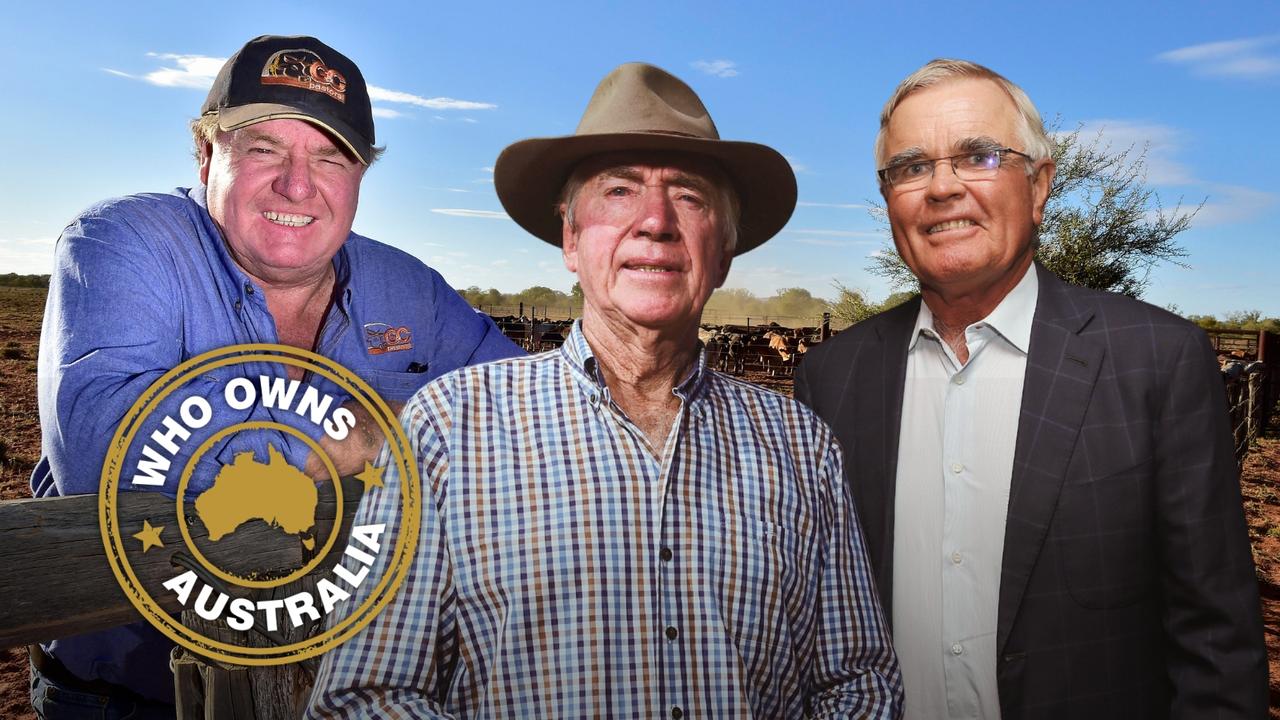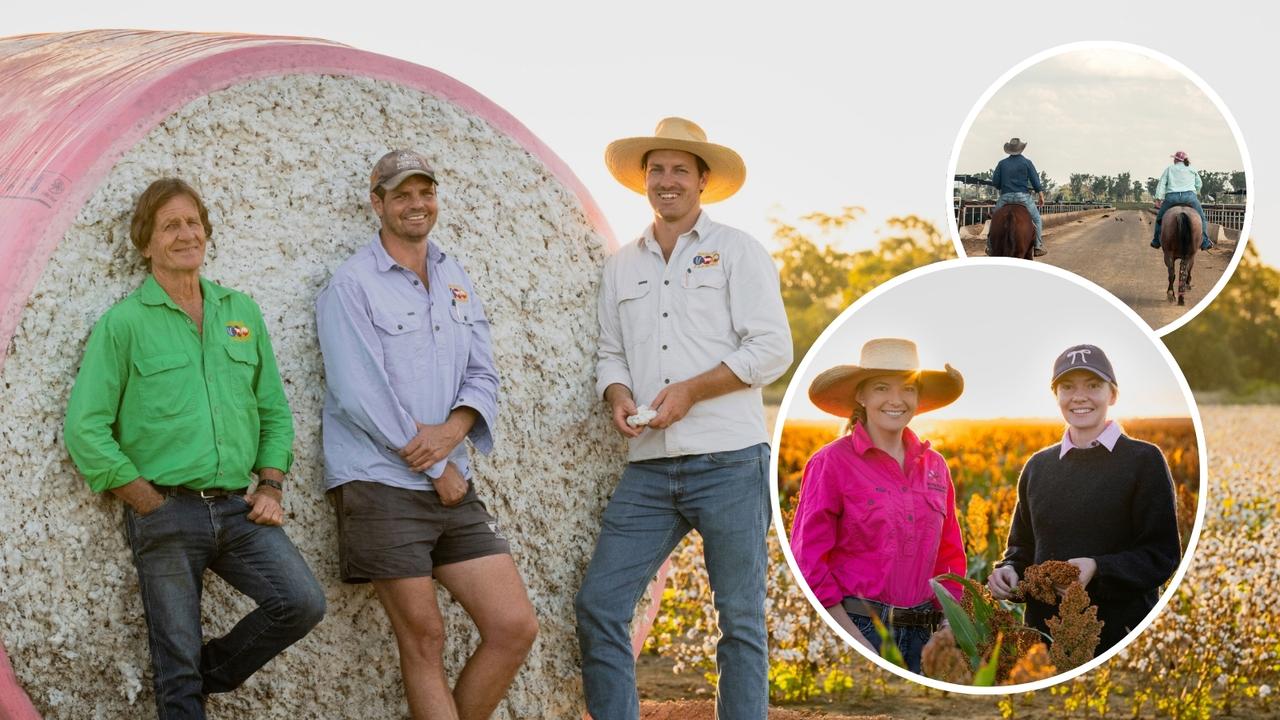Jigsaw Farms hits carbon-neutral goal
One Victorian couple is leading the charge for farmers to become carbon neutral.
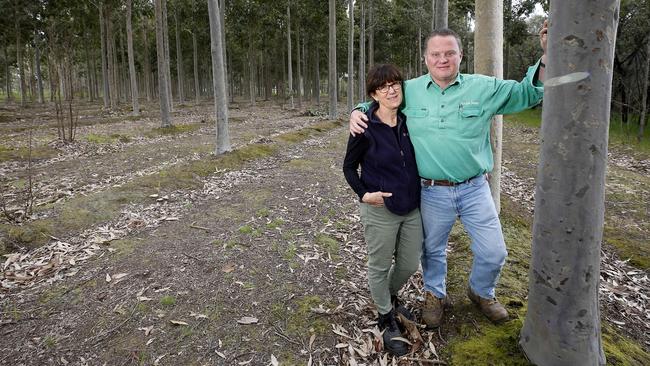
MARK Wootton and Eve Kantor are proud to be among the first certified “carbon-neutral” farmers in Australia.
Since 2010, their 3400-hectare property in western Victoria, 20km north of Hamilton, has achieved official carbon neutrality status, with more carbon stored and saved in their fast-growing new tree plantations and embedded in their rich fertile soils, than the large-scale sheep property “uses” via its farm inputs such as fuel, power and fertilisers, or its 25,000 Merino sheep naturally emit as methane gas.

The commitment to make their business carbon neutral – while still remaining a highly productive and profitable fine wool and sheep meat business – runs deep at Jigsaw Farms, with the quest beginning in 2001 and taking nearly a decade to measure and achieve. It started from the couple’s certainty that climate change, driven by the steep climb in greenhouse gas emissions and carbon levels in the atmosphere, is the biggest threat to their agricultural activities and the future of their children, Australian farmers and the planet.
Kantor and Wootton believed action was urgently needed and – long before consumers started turning away from eating lamb and beef because livestock are the source of 13 per cent of Australia’s harmful greenhouse gas emissions – wanted to see if they could farm profitably without making climate change worse.
“The enormity of the problem shouldn’t mean you can’t do something about it,” Wootton says.
“For us, that meant being among the first to test the theory that Australian farmers are able to run their properties in a way that is carbon neutral — or even positive — in terms of (net) greenhouse gas emissions, with much less impact on climate change, but that is still about normal farming practices and high production levels.” That early philosophy espoused and trialled at Jigsaw Farms has now become a national ambition for Australia’s $18 billion livestock industry and 50,000 sheepmeat and cattle producers.
READ MORE: AGJOURNAL
MACQUARIE BANK’S FIELD MARSHAL TAKES CHARGE
FARMERS FLOCK TO PADDOCK-TESTED AGTECH
Through its peak body, Meat and Livestock Australia, the livestock industry has committed to being carbon neutral by 2030.
Many farmers first feared that this was an impossible mission, or at least a pledge that would impose extra costs and constraints on their businesses, force farmland out of production and sharply reduce the turn-off and profitability of their farms.
But MLA managing director Jason Strong says, led by the example of producers such as Kantor and Wootton at Jigsaw Farms, these concerns are slowly disappearing. In their place is growing interest in innovative solutions and alternative farm management systems that can reduce the hefty contribution the livestock industry currently makes to Australia’s total carbon emissions.
Strong also points out that while the nation’s 20 million cattle and 70 million sheep currently remain the third-largest source of Australia’s greenhouse gas emissions, their contribution – made via methane emitted from their unique digestive process in the rumen – has already been whittled from 20 per cent to 13 per cent of the total tally since 2005.
“A lot has been achieved over the years, but there’s more to do; in theory, the 2030 target (of a carbon-neutral red meat industry) can be reached but we don’t have enough interventions or ways of doing it yet,” Strong admits to AgJournal.
“We are not interested in reducing the size of the national herd or industry to do this, or reducing our overall productivity; there’s no one silver bullet but probably it’s more a case of new research combined with management techniques that reduce emissions and other systems that build and store carbon on our farms that will get us there in the long run.”

STRONG confirms MLA surveys show concerns about the environmental impact of beef on climate change are starting to register with consumers, but says in many cases the consequences of this concern are being exaggerated.
He says the single largest cause of falling beef consumption in Australia remains price – it went up 14 per cent last year – with climate change ranking a distant second, on par with animal welfare, personal health and vegetarianism.
“We have to be conscious of the environmental impact concerns of Australian consumers, recognise that concern and be proactive about doing something, but at the same time not overdramatise the threat, because global protein demand is continuing to increase not shrink,” Strong says.
“It’s complex though because consumers often overlay science with their own personal feelings and beliefs and so you hear things like ‘grass-fed beef must be better’ (in limiting greenhouse gas emissions) than feedlots which is not actually true because it’s all about producing more kilograms of meat in the shortest period of time.”
In the past 10 years, MLA has encouraged beef producers to cut greenhouse gas emissions by focusing on genetic improvement that delivers faster growth rates of cattle, better fertility and improved calf survival rates, and more use of grain feeding to help cattle reach slaughter weight quicker.
The principle behind this thinking is that if every cow in the national herd delivered and reared more calves in a shorter space of time, and those calves then grow more quickly to a size at which they were ready to eat, then the total number of days each animal was alive (to belch harmful methane gas) is minimised.
The next big ticket step or leap forward, according to Strong, is to focus on feed changes that change and limit how livestock digest and process food internally and convert it to muscle. The aim is significantly less methane gas production for every kilogram of meat produced.
Joint CSIRO and MLA research, now close to commercialisation, indicates the greatest promise is held by adding the Australian red seaweed asparagopsis in very low doses to cattle feed. CSIRO scientists have hailed the seaweed as a miraculous “methane-buster”. When 1-2 per cent of the dry matter eaten by a cow is raw and dried asparagopsis, “it completely knocks out methane production,” CSIRO says

The seaweed – now in large-scale commercial production – appears to completely disrupt the stomach enzymes responsible for cattle and sheep producing methane in the rumen (stomach).
Offering it as a feed additive to the one million beef cattle in housed feedlots or to Australia’s 1.6 million dairy cows as they come in to the shed to be milked is regarded as a big and relatively easy first step to cutting livestock emissions, although Strong acknowledges applying the feed supplement daily to cattle grazing on open pastures and outback paddocks is logistically challenging.
But on these outback cattle properties, planting the tropical legume shrubs leucaena and desmanthus both hold great promise. CSIRO has found both plants – already used on some cattle stations to boost pasture and animal growth – also reduce methane emissions of grazing cattle by a substantial 20 per cent.
“While the effect is smaller, it shouldn’t be discounted,” says CSIRO. “These legumes could be planted into (north Australian) grazing systems immediately and … could feed many more of the 20 million beef cattle in Australia (than a daily seaweed additive).
“Even a 20 per cent reduction in (livestock) emissions from cattle grazing leucaena and desmanthus could equate to a saving of anywhere between half a million and a million tonnes of greenhouse gases per year (in Australia); that’s like taking up to 200,000 cars off the road.”
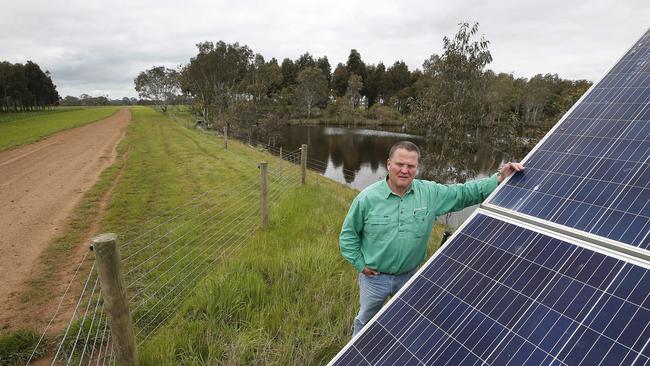
FOR Kantor and Wootton the path to carbon neutrality has until now focused on more simple building of the carbon stored on their farm, while also working with Melbourne University climate change and agricultural professor Richard Eckard to measure and reduce the carbon emissions associated with their normal farming operations.
All water pumps for their livestock troughs are now solar powered. Fuel-efficient vehicles are used and pastures improved. Lambing and fertility genetics have been selected to boost lambing rates to 105 per cent.
But reluctant to reduce either livestock stocking rates or fertiliser use, Jigsaw’s biggest focus since 2002 has been on more trees. More than 1.2 million trees have been planted into hardwood timber stands for future harvesting and perpetual tree reserves and shelter belts, covering 650 hectares.
Mark Wootton says for his high-production, high-input sheep and wool operation, he has reached carbon neutrality with about 19 per cent of his farm covered with trees.
While more than 37,000 tonnes of carbon has been sequestered in their growing trees in 14 years, against expectations, Wootton says livestock-carrying capacity has increased while financial returns have jumped more than 10 per cent a year. Side benefits have been more birds, more biodiversity and boosted sheep growth rates because of the enhanced protection, shading and moisture retention offered by the tree belts in his remaining paddocks.
“The only way we could afford to put 20 per cent of our land under trees and to plant 1.2 million of them, was to generate enough income by being super productive so we had surplus funds,” Wootton explains. “You can’t always think about returns, but this (system) does work financially.
“But for many other farmers around here in the Western District who are running lower average sheep stocking rates, I’ve calculated they could be carbon neutral with just 10-12 per cent of their farm planted to trees; it’s not that difficult to do and it doesn’t cost production or profit.
“The best thing is that the drivers for carbon neutrality or a low-carbon farming operation are the same that make us more economic – more fertile animals, more productive pastures and more efficient resource use – I really don’t think the answer to making the (entire livestock industry carbon neutral by 2030) will depend on some new space-age invention.”

WOOTTON’S next move is to focus on lamb survival, fertility and twinning rates; trying to increase his Merino lamb weaning percentages from 105 to 120 per cent for every breeding ewe in his flock.
“It sounds unrelated, but that would instantly reduce our greenhouse gas emissions and footprint every year by another 10-15 per cent,” he says.
In the past decade, more than 20,000 farmers and field day groups have visited Jigsaw Farms to hear about their approach to reducing carbon emissions.
But Wootton and Kantor say their motivation was never to be able to label their wool or lamb meat as carbon neutral – they don’t have their own brand – nor, perhaps surprisingly, was it done in the hope of earning carbon credit payments.
“A lot of farmers ask us if there is a market for our carbon but we say, at the moment, don’t kid yourself; do it for other reasons now, the co-benefits of trees, and not because you expect a return for carbon storage,” Kantor says.
“We suspect biodiversity and carbon credits will happen, but think you have to have the courage and vision yourself about where you want to end up when you (engage in a zero carbon quest), and not just wait for a functioning carbon trading market before you do anything.”
For other farmers with smaller properties, the answer to being paid for their carbon sequestration appears to lie less in storing carbon in trees and more in boosting depleted soil carbon and organic-matter levels.
This trail has been blazed by Gippsland beef producer Niels Olsen, who in April became the first Australian farmer to receive carbon credit payments from the $2.5 billion national Emissions Reduction Fund by massively building the organic matter stored in his black Gippsland topsoil from 3 per cent to 10 per cent.
His feat of building stored carbon at the rate of 11.3 tonnes per hectare in the first year across 100 hectares of his rolling green hill farm – accomplished using Olsen’s patented SoilKee pasture renovator machine, which aerates, tills and sows strips of a large mix of annual crops seeds such as vetch, peas, barley, chicory and brassicas into existing perennial pastures – saw a groundbreaking 404 Australian Carbon Credit Units (ACCUs) issued worth $4000, or about $9.90 each.
While Olsen has just applied for a further 1000 carbon credits to be issued, as his soil organic matter and bacteria continues to build and sequester more carbon, another 70 farmers from north Queensland to Tasmania have already embarked on the same soil-carbon voyage, using both the SoilKee system and Olsen’s soil carbon farming adviser and broker, AgriProve.
AgriProve managing director Matthew Warnken believes most farms, especially those with 500-1000mm of annual rainfall, can generate between 10-15 carbon credits every year from each hectare of their farm pastures they regenerate and focus on improving their soil carbon levels stored in their topsoil.
Conservatively, these farmers stand to be paid at least an extra $100 a hectare every year from carbon credit payments as they lift the soil organic matter content in the top 30cm of their soil from 3 to 8 per cent, with carbon stored likely to keep on increasing before it plateaus for at least a decade.
“It’s a conservative $100/ha from increased soil carbon at an average price of $10 an ACCU, and the best thing for the farmer is that it goes straight to the bottom line,” Warnken says. “And that’s without including the added obvious side benefits of increased productivity, stocking rates and soil fertility.”
Louisa Kiely, of Carbon Farmers of Australia, says with many Australian farming soils so compacted and depleted that carbon content is below 1 per cent, there appears plenty of scope for soil regeneration, organic matter build-up and carbon storage payments to take many years before maximum levels of 10-12 per cent carbon are reached.
“We are at the early adopter phase of carbon farming but, since Niels Olsen sold the first soil carbon sequestration credits that qualified for Australia’s greenhouse gas emission reduction targets under the Paris Agreement early this year, other farmers are slowly getting hold of this,” Kiely says.
“The other carbon-storage methods for agriculture have been around the edge, limited to piggeries capturing methane, reforestation or avoided landfill, but soil carbon is the real deal, the breakthrough.
“It’s such a win-win for farmers; they don’t want handouts and this way they get paid for being better food producers, regenerating their soils, being more productive and sustainable and more drought resilient, as well as helping address the nation’s carbon emissions and climate change – that sounds a good outcome for the nation and the world to me.”
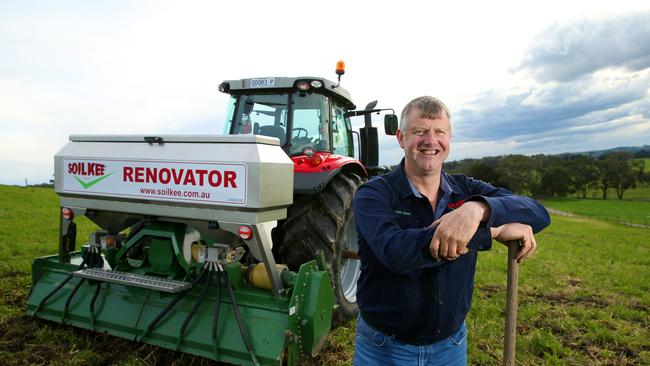
GO NEUTRAL OR GET CREDIT?
WITH consumers starting to switch away from meat based on claims livestock production is “environmentally unfriendly” and “causing climate change”, it is small wonder Australian farmers are increasingly talking about the potential advantages of turning their farm “carbon neutral”.
This trend sits alongside the commitment by Meat and Livestock Australia that the Australian red meat industry will be carbon neutral by 2030.
But confusion is rife among farmers about what carbon neutrality actually means, how it can be attained and if it is the same thing as building soil carbon and earning carbon credits for which they will be paid, as Gippsland farmer Niels Olsen was in April.
Louisa Kiely, director of private company Carbon Farmers of Australia, says both carbon neutrality and earning carbon credits achieve the same overarching purpose of reducing the net amount of harmful greenhouse gas emissions going into the atmosphere – and therefore contributing to critical climate change – from any single farm. But to “go carbon neutral” involves an audit or strict accounting of the carbon footprint of the farm business.
Firstly by measuring the carbon emissions in all farm inputs such as fuel, fertilisers, farm chemicals and power, and then adding the methane emitted naturally by the cattle and sheep run on the farm.
The principle of carbon neutrality is initially to find ways to lower the farm’s emission footprint. This can include switching fuel type, converting to solar power, reducing chemical and fertiliser use and focusing on improved cattle management and fertility.
Feeding special livestock seaweed supplements to chemically reduce the methane “burping” from livestock rumens is another promising option.
Kiely says these measures will lower a farm’s footprint, but not “wipe it out”, which is what carbon neutral means.
READ MORE: AGJOURNAL
AGRICULTURE’S 20 HOT ISSUES FOR THE 2020S
HUGE DEALS DAZZLE AG PROPERTY MARKET
To achieve true neutral status – that can be measured and certified by audits – new carbon must be stored or generated on the property by planting tree plantations or tree shelter belts or substantially increasing carbon (organic matter) content embedded in the farm’s soils.
If all else fails, and on-farm stored carbon still doesn’t balance or cancel out the emissions generated by the farm, authorised carbon credits can be purchased on the open market to achieve zero net emissions and reach carbon neutrality status. Once attained, the farmer benefits from being more efficient, from farm productivity increases, potentially having an alternative source of stored tree or soil carbon – and can brand meat or fibre products sold from the farm as “being carbon neutral”, hopefully with a consumer price premium attached.
In contrast, to become a carbon farmer and earn carbon credit cash payments, strict government methodologies must be adhered to, carbon project developers, partners, and brokers found, and baseline carbon measurements taken (and paid for).
Once new carbon can be guaranteed to be stored, long-term contracts for the sale of additional carbon sequestered on the farm can be entered into with intermediate brokers, with the Clean Energy Regulator (paid via the Emissions Reduction Fund) or with private carbon-polluting companies, such as airlines, energy corporations or manufacturers.
An Australia Carbon Credit Unit represents one tonne of carbon stored. The price for each ACCU varies on the length of the contract but currently will earn a farmer about $10-12/tonne for carbon stored long term, although the spot price has risen to about $16/t.
“So one pathway offers a potential premium while the other gives the farmer an alternate income source; in both cases you will be reducing emissions going into the air or storing it in trees or soils, (but) the claims the farmer can make are different,” Kiely says.
“Personally, I believe earning a carbon credit (rather than just striving for carbon neutrality) is better for farmers and farming – and the climate in general. This is because it provides an income at a transparent price, which in my mind is far better than just seeking an uncertain price premium for your product.”


